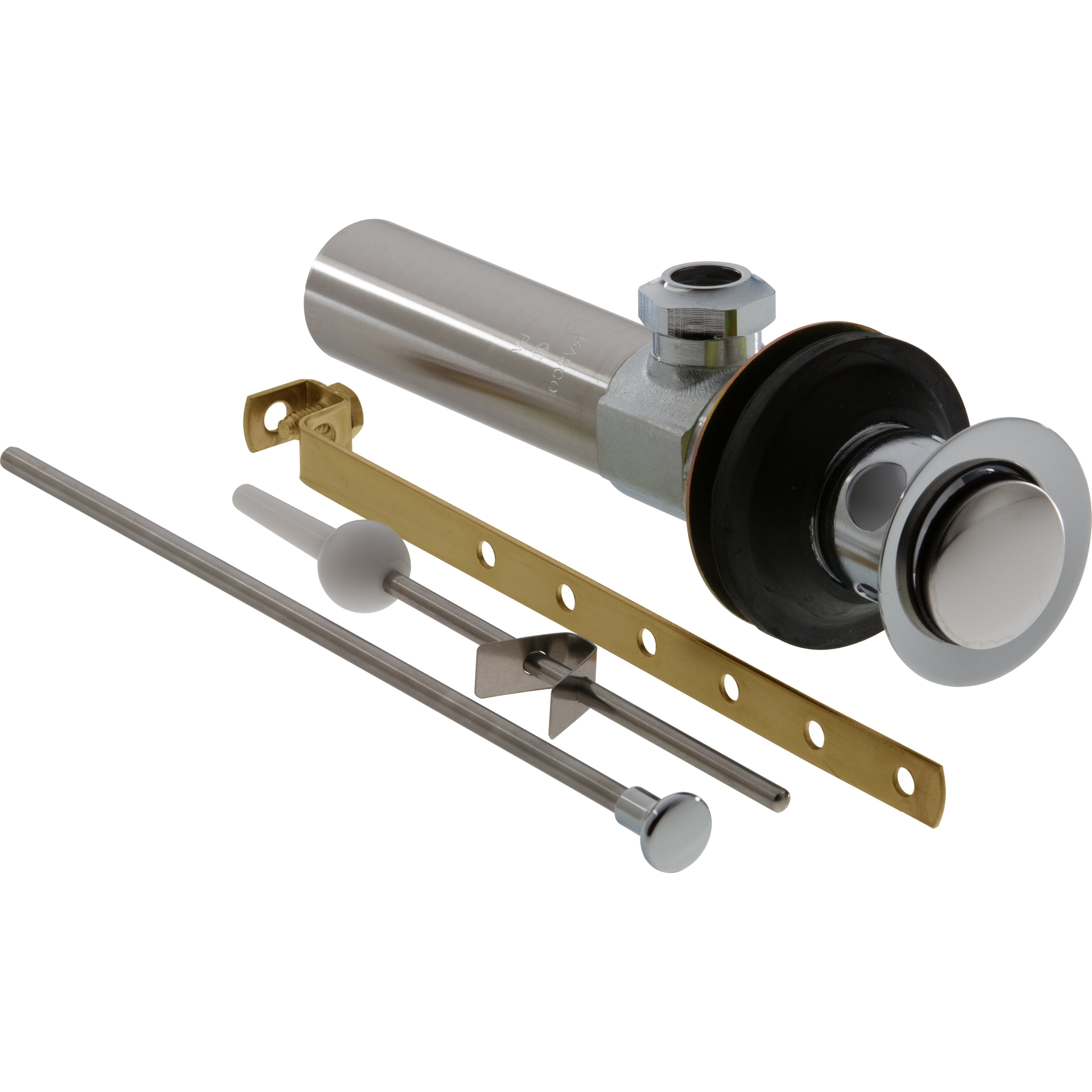Components of a Bathroom Sink Drain: Bathroom Sink Drain Parts

Bathroom sink drain parts – A bathroom sink drain is a plumbing fixture that allows water to flow from the sink into the waste system. It consists of several components that work together to ensure proper drainage and prevent leaks.
Drain Stopper
The drain stopper is a device that plugs the drain hole to prevent water from flowing out. It is typically made of rubber or plastic and has a handle or knob that allows it to be opened or closed.
Tailpiece, Bathroom sink drain parts
The tailpiece is a curved pipe that connects the drain stopper to the trap. It is usually made of metal or plastic and has a flange at one end that fits over the drain hole.
Trap
The trap is a U-shaped pipe that holds water to create a seal that prevents sewer gases from escaping into the bathroom. It is connected to the tailpiece at one end and to the drainpipe at the other end.
Flange
The flange is a flat, circular piece of metal or plastic that fits over the drain hole and provides a seal between the sink and the drain assembly. It is typically held in place by screws or bolts.
Common Drain Problems and Solutions

Every bathroom sink has a drain, and every drain is susceptible to clogs. Slow-draining sinks are a common problem that can be caused by a variety of factors. In this article, we will identify the causes of a slow-draining sink and provide solutions for unclogging it.
Identifying the Causes of a Slow-Draining Sink
There are several factors that can contribute to a slow-draining sink, including:
- Hair and soap scum buildup
- Mineral deposits
- Foreign objects (e.g., toys, jewelry)
- Damaged or corroded pipes
Unclogging a Drain Using a Plunger or Drain Snake
If your sink is draining slowly, the first step is to try to unclog it using a plunger or drain snake.
- Using a plunger: Place the plunger over the drain and fill the sink with enough water to cover the plunger cup. Plunge up and down vigorously for several minutes. If the clog is dislodged, the water will start to drain more quickly.
- Using a drain snake: Insert the drain snake into the drain and turn the handle clockwise. The snake will work its way through the clog and break it up. Once the clog is broken up, flush the drain with hot water to remove the debris.
Removing and Cleaning a Clogged P-Trap
If plunging or snaking the drain does not work, you may need to remove and clean the P-trap. The P-trap is a U-shaped pipe that is located under the sink. It traps water to prevent sewer gases from entering the home. Over time, the P-trap can become clogged with hair, soap scum, and other debris.
- Locate the P-trap: The P-trap is usually located under the sink, directly below the drain. It is typically made of plastic or metal and has two nuts that hold it in place.
- Remove the P-trap: Place a bucket under the P-trap to catch any water that spills out. Loosen the nuts that hold the P-trap in place and carefully remove the P-trap.
- Clean the P-trap: Use a brush or your fingers to remove any hair, soap scum, or other debris from the P-trap. Rinse the P-trap thoroughly with hot water.
- Reinstall the P-trap: Replace the P-trap under the sink and tighten the nuts that hold it in place. Make sure that the P-trap is properly aligned and that there are no leaks.